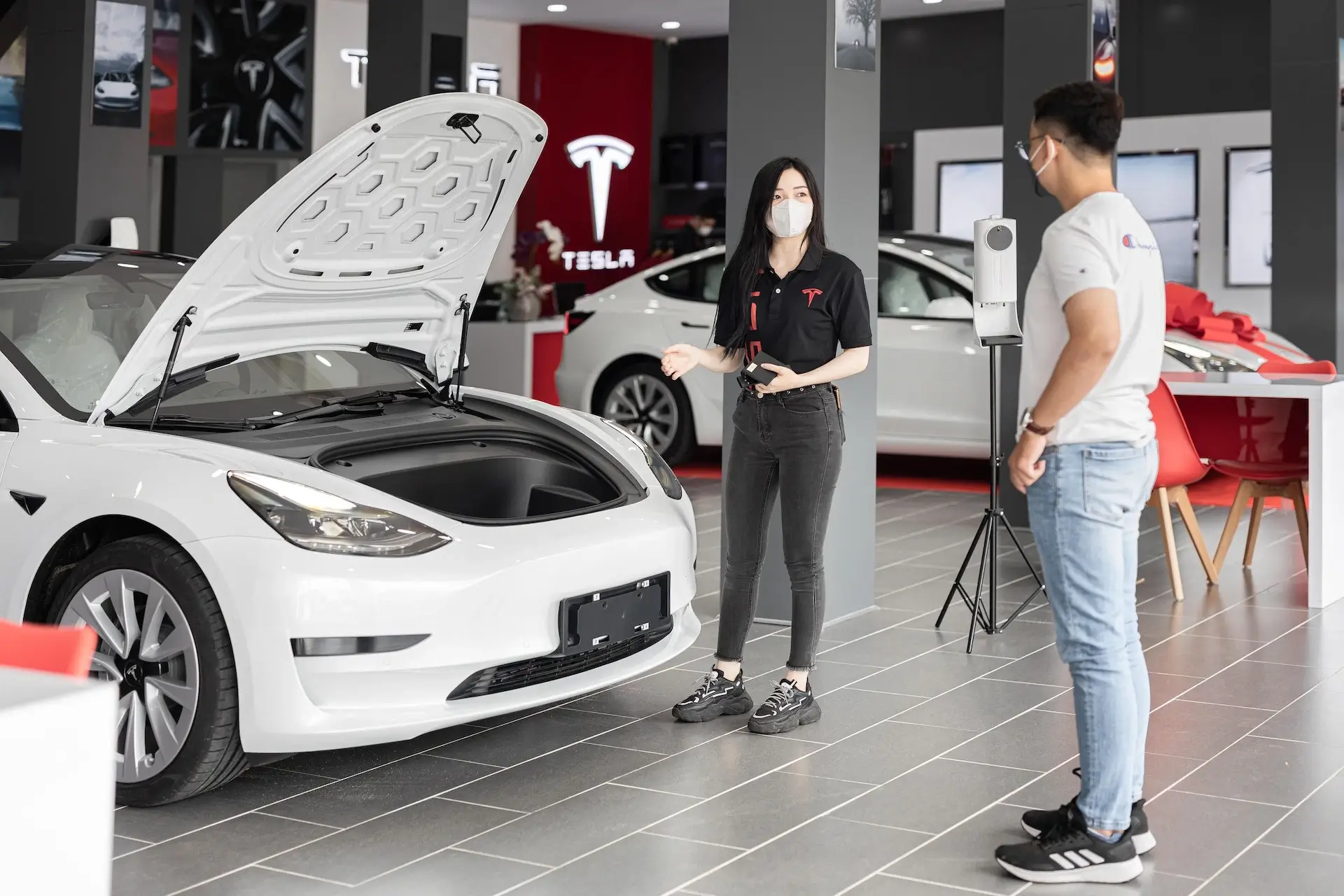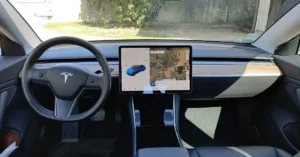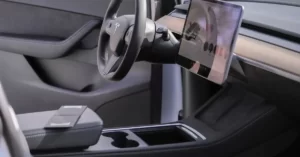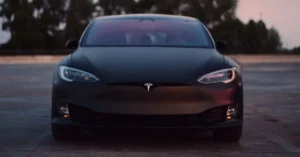Thinking “Does Tesla have a transmission” is pretty normal while researching electric vehicles. Let’s get this question out of the way today!
Table of Contents
Tesla is a well-known and innovative company that has revolutionized the automotive industry with its electric vehicles. One of the most notable differences between Tesla’s electric cars and traditional gasoline-powered cars is the powertrain.
This raises the question: does Tesla have a transmission? In this article, we will explore the concept of transmission, how it functions in traditional vehicles, and how Tesla’s electric powertrain differs from the traditional powertrain.
We will also discuss the advantages of Tesla’s electric powertrain and how it affects the driving experience. We will also touch on Tesla’s impact on the automotive industry and the future of electric vehicles.
Does Tesla Have a Transmission 2023?
Tesla electric vehicles do not have a traditional transmission as they use electric motors, which do not require a transmission to transfer power from the engine to the wheels.
Instead, they use a single-speed “transmission” that connects the electric motor directly to the drive wheels. This allows for instant torque and smooth acceleration, but also limits the top speed of the vehicle.
Understanding Transmissions:
Transmissions are a crucial component of traditional gasoline vehicles, as they are responsible for controlling the power generated by the engine and delivering it to the wheels. The main function of a transmission is to change gears, which allows the vehicle to efficiently use the engine’s power at different speeds. There are several types of transmissions commonly found in traditional vehicles, including manual, automatic, and continuously variable transmissions (CVT).
Manual transmissions require the driver to manually shift gears using a gear lever and a clutch pedal. Automatic transmissions, on the other hand, use a complex system of gears, clutches, and a torque converter to automatically shift gears based on the vehicle’s speed and power needs. CVT transmissions use a belt and pulley system that allows for an infinite number of gear ratios, providing smooth and efficient power delivery.
It’s worth noting that electric vehicles, like Tesla, don’t have a transmission because they don’t have a combustion engine that needs to be connected to the wheels. They have electric motors and gearbox with single gear ratio that can be directly connected to the wheels. Electric motors provide instant torque and the gear ratio can be chosen to provide the optimal power output for the vehicle’s speed.
Tesla’s Electric Powertrain:
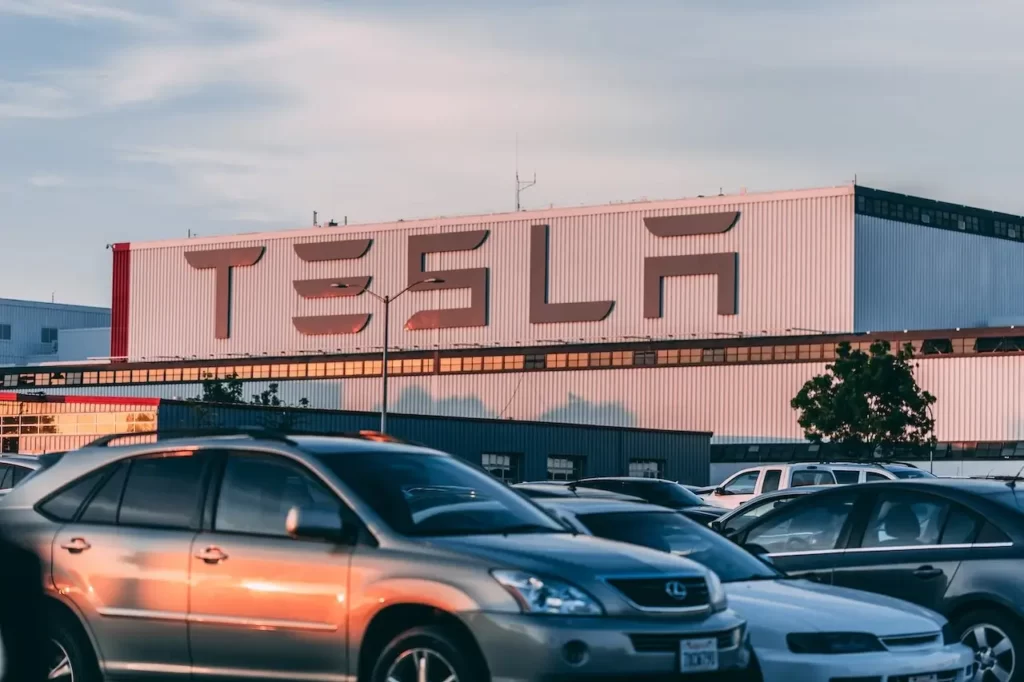
Tesla’s electric powertrain is significantly different from the traditional gasoline powertrain found in most vehicles. Instead of an internal combustion engine and a transmission, Tesla vehicles use electric motors and a single-speed gear reduction unit.
The electric motor in a Tesla vehicle is powered by a large battery pack, which stores energy generated from regenerative braking and charging from an external power source. The electric motor then uses this stored energy to power the vehicle’s wheels, providing instant torque and smooth acceleration.
The single-speed gear reduction unit in a Tesla vehicle is responsible for optimizing the electric motor’s power output for the vehicle’s speed. Unlike traditional transmissions, which have multiple gears that need to be shifted, the single-speed gear reduction unit in a Tesla vehicle provides a fixed gear ratio that is optimal for the vehicle’s speed range.
This design eliminates the need for a traditional transmission, as the electric motor and single-speed gear reduction unit can directly power the wheels. This eliminates the need for gear shifting and improves the vehicle’s efficiency and power output. Additionally, the simpler powertrain design results in reduced maintenance costs, as there are fewer moving parts that can wear out or break.
Advantages of Tesla’s Electric Powertrain:
Tesla’s electric powertrain offers several advantages over traditional gasoline powertrains.
One major advantage is increased efficiency. Electric motors are more efficient than internal combustion engines, as they convert a higher percentage of the energy stored in the battery pack into power for the vehicle’s wheels. Additionally, the elimination of the transmission and gears in a Tesla powertrain results in less energy loss and fewer moving parts, further increasing the vehicle’s overall efficiency.
Another advantage of Tesla’s electric powertrain is improved power output. Electric motors provide instant torque, which means they can accelerate the vehicle quickly and smoothly without the need for gear shifting. Additionally, the electric powertrain allows for better control over the vehicle’s power output, resulting in a more responsive and engaging driving experience.
The electric powertrain also has a simpler design which results in less maintenance. With fewer moving parts, there are fewer components that can wear out or break, reducing the need for costly repairs and maintenance. Additionally, electric motors have a longer lifespan than internal combustion engines, further reducing maintenance costs.
Finally, Tesla’s electric powertrain also has a positive impact on the environment as it eliminates emissions from the tailpipe and reduces dependence on fossil fuels.
FAQ:
What kind of transmission is in a Tesla?
Tesla vehicles do not have a traditional transmission found in internal combustion engine vehicles. Instead, they have an electric motor and a single-speed gear reduction unit. The electric motor is powered by a large battery pack, which stores energy generated from regenerative braking and charging from an external power source. The electric motor then uses this stored energy to power the vehicle’s wheels, providing instant torque and smooth acceleration. The single-speed gear reduction unit optimizes the electric motor’s power output for the vehicle’s speed range. This design eliminates the need for gear shifting and improves the vehicle’s efficiency and power output. Additionally, the simpler powertrain design results in reduced maintenance costs as there are fewer moving parts that can wear out or break.
Do electric cars have transmissions?
Electric cars, like those produced by Tesla, do not have traditional transmissions found in internal combustion engine vehicles. Instead, they have an electric motor and gearbox. The electric motor is powered by a large battery pack, which stores energy generated from regenerative braking and charging from an external power source.
The electric motor then uses this stored energy to power the vehicle’s wheels, providing instant torque and smooth acceleration. The gearbox, typically a single-speed reduction gear, optimizes the electric motor’s power output for the vehicle’s speed range. This design eliminates the need for gear shifting and improves the vehicle’s efficiency and power output.
Additionally, the simpler powertrain design results in reduced maintenance costs as there are fewer moving parts that can wear out or break. Electric cars don’t require the use of gears and clutches in order to drive, this is because the electric motor provides maximum torque from 0 RPM, which eliminates the need for gears to be shifted.
Do Teslas have transmission fluid?
Tesla vehicles do not have traditional transmissions found in internal combustion engine vehicles, and as such, they do not require transmission fluid. Instead of gears and clutches, Tesla vehicles use an electric motor and a single-speed gear reduction unit, which reduces the number of moving parts and eliminates the need for transmission fluid.
The electric motor is powered by a large battery pack, which stores energy generated from regenerative braking and charging from an external power source. The electric motor then uses this stored energy to power the vehicle’s wheels, providing instant torque and smooth acceleration. The single-speed gear reduction unit optimizes the electric motor’s power output for the vehicle’s speed range.
This design eliminates the need for gear shifting and improves the vehicle’s efficiency and power output, and reduces maintenance costs as there are fewer moving parts that can wear out or break.
Can you shift gears in a Tesla?
Tesla vehicles do not have traditional transmissions found in internal combustion engine vehicles, so you cannot shift gears in the traditional sense. Instead of gears, Tesla vehicles use an electric motor and a single-speed gear reduction unit.
The electric motor is powered by a large battery pack, which stores energy generated from regenerative braking and charging from an external power source. The electric motor then uses this stored energy to power the vehicle’s wheels, providing instant torque and smooth acceleration.
The single-speed gear reduction unit optimizes the electric motor’s power output for the vehicle’s speed range. This design eliminates the need for gear shifting and improves the vehicle’s efficiency and power output. Tesla vehicles use a single speed gear reduction between the electric motor and the drive wheels, this is why you won’t see any gear shift lever or clutch pedal. The power from the electric motor is transmitted directly to the wheels, which eliminates the need for gears to be shifted.
If you liked this blog article about the question: Does Tesla Have a Transmission, don’t forget to leave us a comment down below to tell us about your experience.

